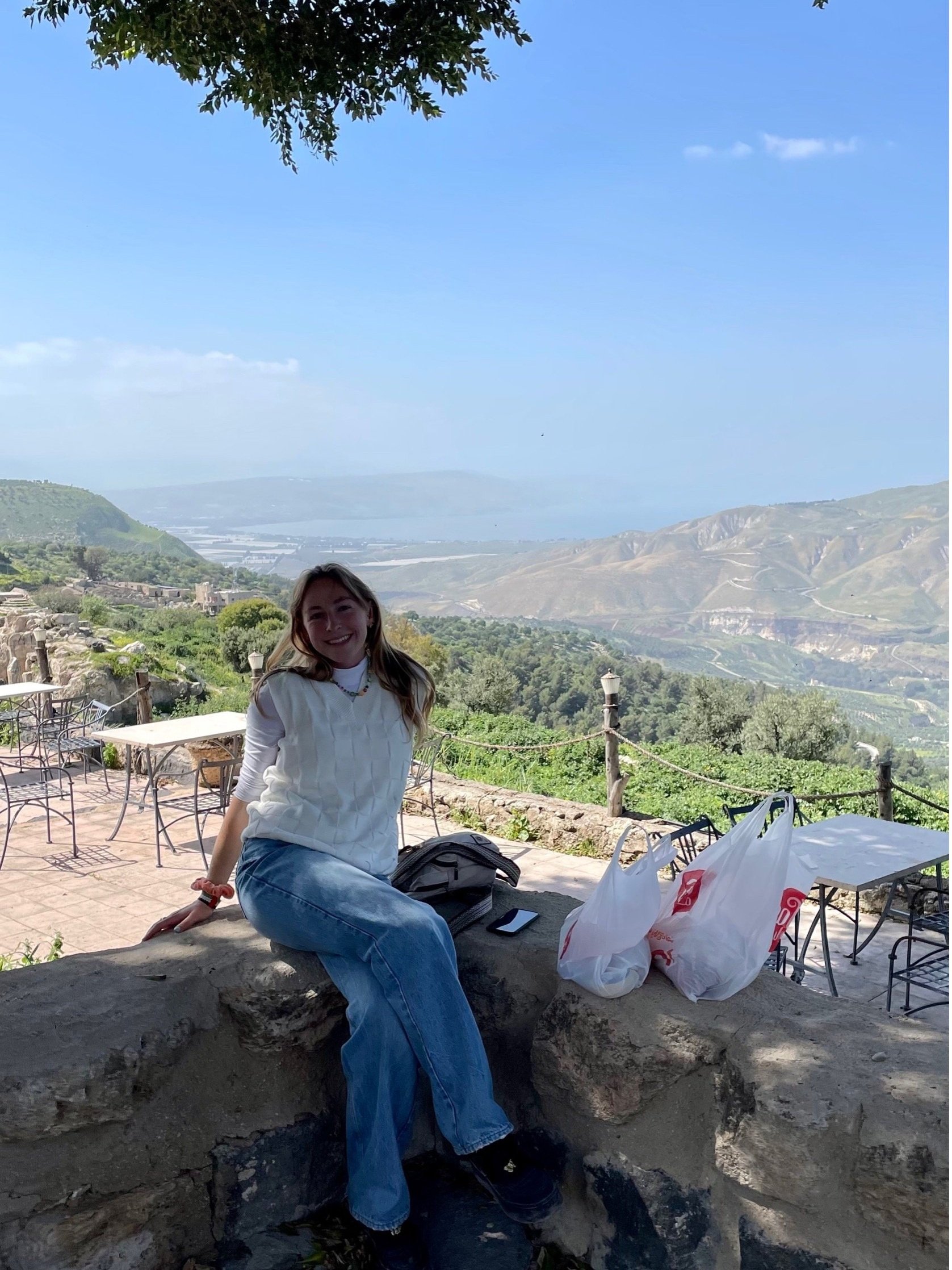Umm Qais: Overlooking Borders. A Photo Diary
By Alyssa Kristeller
On my recent trip to Jordan, a friend and I made a day trip from Amman, the capital, to Umm Qais (أم قيس), a town in northern Jordan. Umm Qais is renowned for its archaeological history, as it features ruins from ancient Roman and Ottoman civilizations.
Formerly known as Gadara, the first historical records mentioning the city indicate that it was ruled by the Greeks under the leadership of Alexander the Great after he conquered Syria in 333 BCE. The Roman general Pompey conquered the region in 63 BCE and Gadara became a city of the Decapolis, the league of 10 ancient Greek cities in the Levant formed after the Roman conquest of the region. In the seventh century, following the victory of the Ottoman armies over the Byzantine Empire, the region fell under Muslim control. Therefore, in one visit, you can see ruins from an ancient Roman church and mausoleum surrounded by remains of the Ottoman village, as well as tour the site’s museum which was once the residence of the Ottoman governor.
In my opinion, however, the real wow factor at Umm Qais is the view. From the north side of the site, you can overlook Jordan, Syria, Israel, and the Palestinian Territories, as well as some of the most historical and controversial areas in human history:
Lake Tiberias (بحيرة طبريا), also known as the Sea of Galilee, is the largest freshwater lake in the Jordan Valley, fed primarily by the Jordan River. The lake is under Israeli control but is an important source of water for the region and provides Israel with about 10% of its drinking water and, according to the Israel-Jordan Peace Treaty of 1994, Israel supplies Jordan with about 50 million cubic meters of water from the lake per year. According to the New Testament, the Sea of Galilee is the site where Jesus performed many of his miracles - including walking on water. It is a popular tourist destination for Christian pilgrims who visit the region to see where Jesus performed these miracles, and the Israeli government even constructed a 64km-long hiking trail referred to as the “Jesus Trail” for these Christian visitors.
The Golan Heights became part of the French mandate for Syria after World War I, and its strategic location and altitude served the Arab forces well in the 1948 Arab-Israeli War. It was seized, along with Lake Tiberias, by Israel in the Six-Day War of 1967, and remains under Israeli control to this day. The Golan Heights was predominantly inhabited by Druze Arabs, an ethnoreligious group who were offered Israeli citizenship and have since remained loyal to the state - Druze are the only Arab group conscripted into the Israel Defense Forces or IDF.
The closest that Israel and Syria ever came to negotiating peace was in 1999, with the US-brokered talks between former Israeli Prime Minister Ehud Barak and former Syrian President Hafez Al-Asad. The stalling point in these talks was the easternmost border of the Sea of Galilee - Israel was prepared to return the Golan Heights to Syria, but not necessarily return to pre-1967 lines, as Al-Asad demanded, which would have given Syria access to the eastern shore of the lake. Because of this issue, the peace talks collapsed and the prospect of reviving them has grown further and further over time.
This view from Umm Qais is breathtaking just because of its beauty - even if you aren’t aware of its vast history. However, for my friend Joseph and I, on our visit, we weren’t aware at first of exactly what we were looking at. We took pictures of the view, and sat down for a picnic, basking in its magnificence.
“Look at that lake,” Joseph said. Immediately upon realizing what lake it was we both looked at each other - mouths gaping open in shock - “that’s the Sea of Galilee isn’t it?” we asked each other.
“That’s where Jesus walked on water!” Joseph exclaimed.
”That’s the reason the peace negotiations between Israel and Syria collapsed in 1999!” I exclaimed.
Whether or not you get as excited about religion or Middle Eastern history as Joseph or me, I guarantee that you’ll also enjoy a lovely visit to Umm Qais – and don’t forget your picnic food!
Sources:




